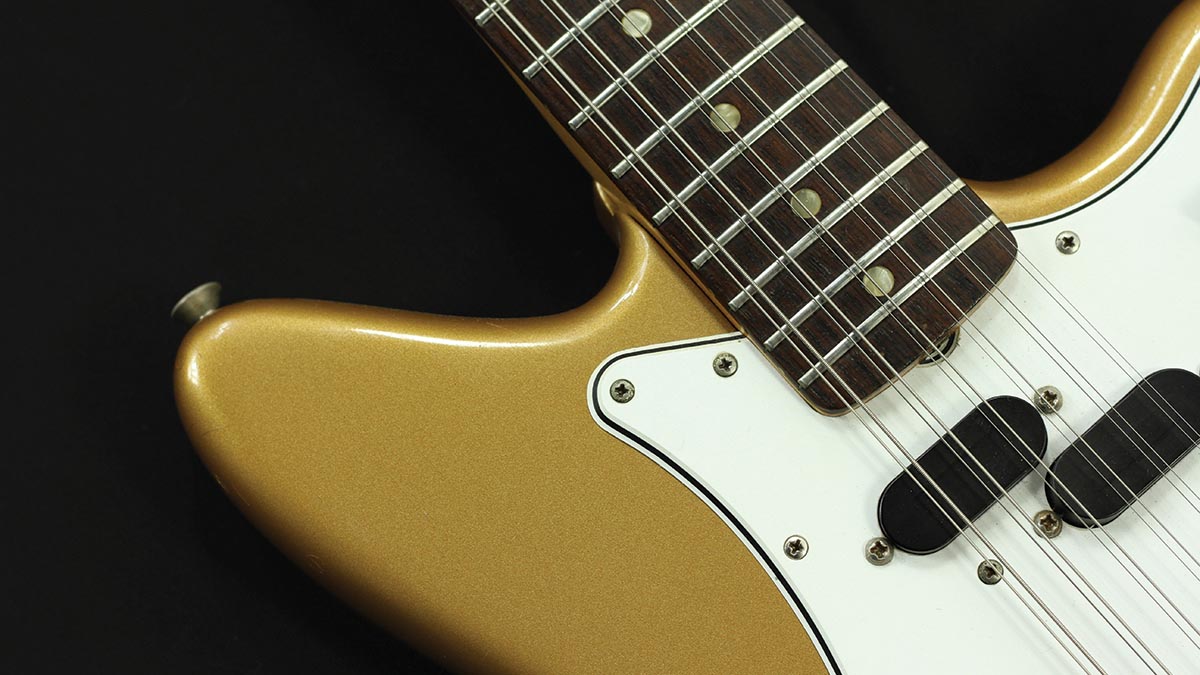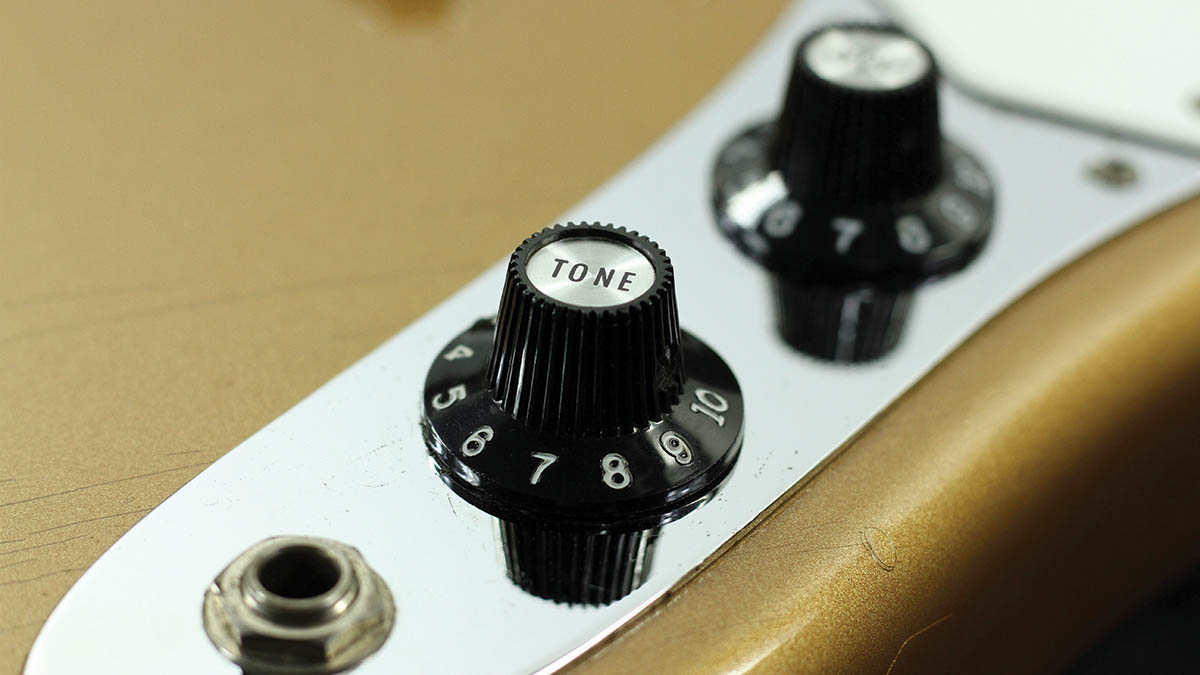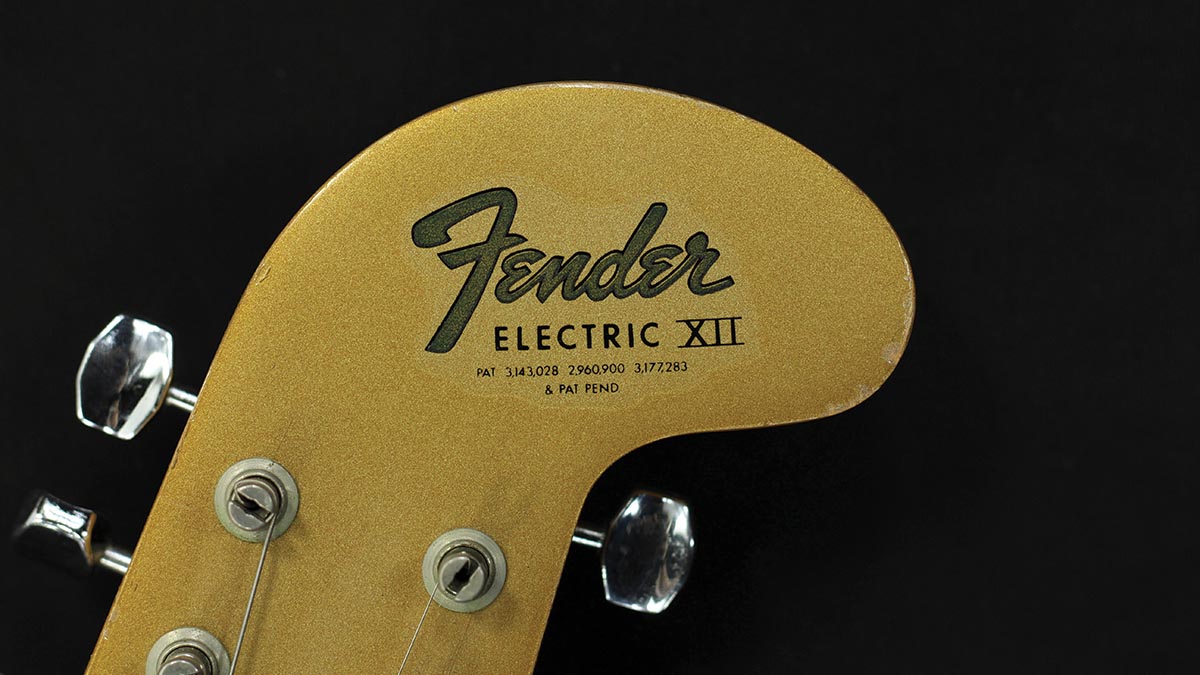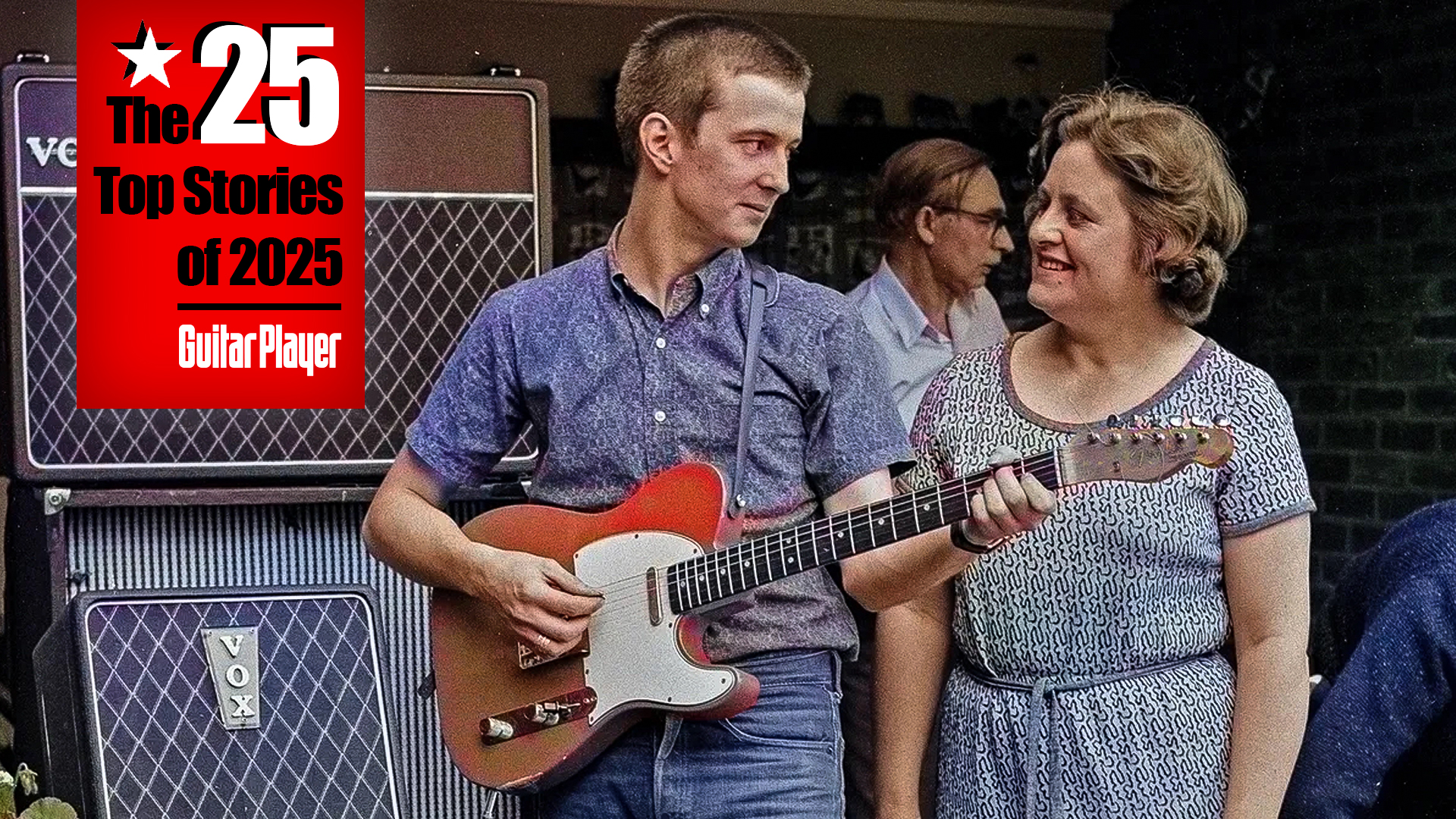How the Fender Electric XII Became the Sound Everyone Chased During the Late-’60s Craze for 12-String Jangle
The unorthodox 12-string electric found its way onto some of rock's most classic recordings, wooing guitarists the world over, but the course of true love ran any way but smooth.

For a brief period in the mid 1960s, the 12-string electric guitar was setting pop soundscapes on fire, and it seemed the instrument would be with us forever – until, virtually overnight, it wasn’t.
Certainly Rickenbacker’s 360/12 of 1964 set the standard, as played by both the Beatles’ George Harrison and the Byrds’ Roger McGuinn on some of the most influential 12-string-laden recordings of the era.
The Fender Electric XII of 1965 was a cleverly designed attempt to grab a slice of the market. And while the 12-string fad faded faster than the company could have predicted, the Electric XII found its way onto a surprising number of iconic recordings.
The ’60s were an appropriately swinging time at Fender, and the company launched
a number of hip new designs both before and after CBS’s takeover of the operation in early 1965.
Like so much of the guitar-gear market that decade, the Beatles’ massive success might have driven some such ideas, including the Electric XII and the thinline Coronado electric that came out alongside it, a guitar not a mile away design-wise from the Epiphone Casinos the Fab Four were using.
(Indeed, Fender was actively courting the Beatles and succeeded in late 1968, as evidenced by the plethora of guitars and guitar amps, and the Fender Rhodes electric piano, in footage of the group recording Let It Be in January 1969.)
Like so many things launched behind a trend, neither the Electric XII nor the Coronado had much longevity, but both certainly made a splash here. Members of the house band in the 1968 Elvis Presley movie Speedway mime on an Electric XII, a Stratocaster and a Precision Bass, while Presley briefly shreds, thumps and strums a Coronado II.
All the latest guitar news, interviews, lessons, reviews, deals and more, direct to your inbox!
Apart from the elongated “sore thumb” headstock, the Electric XII is recognizably Fender in many ways, including its bolt-on neck, an offset-waist body that is a clear relative of the Jazzmaster and Jaguar, and the 25 ½–inch scale length found on the bigger flagship Fender models, which adds tighter lows and extra harmonic shimmer to that 12-string jangle when compared to guitars of shorter scale lengths.
Fender’s seminal electric 12-string proved more a studio weapon than an easily identifiable stage prop. Jimmy Page played an Electric XII on Led Zeppelin’s “Stairway to Heaven”
The Electric XII’s two split-single-coil pickups had not appeared on any previous Fender guitar, but they did seem to be a clear descendant of the pickup on the Precision Bass, and would be echoed on the Mustang Bass of 1966, as well as the Custom, the Frankensteinian six-string effort that would help to use up unwanted Electric XII parts a few years down the road.
These pickups were wired through an unusual four-position switch that, in addition to the traditional neck, both and bridge settings, offered a fourth setting with the pickups together in parallel but out of phase, for a funky, scooped-sounding breed of chime.

In addition to the two prominent rows of six tuners on the headstock, the bridge is another substantial piece of hardware, and quite a clever creation.
It begins with a trapezoidal steel plate like that used on the Duo Sonic II, released the year before, but it ups the ante with 12 individually adjustable barrel saddles (perhaps inspired by those on the Mustang vibrato bridge), held firmly in place by a metal support structure.
It’s both solid and fully intonatable, and it’s arguably superior to the Rickenbacker’s 12-string bridge, which, despite having individually adjustable saddles, is rather clunky and awkward.

Like many Fender guitars of the era, the Electric XII came standard in sunburst, but
it can also easily be found in a range of custom colors since that program was firing on all cylinders in Fullerton by the mid ’60s.
The beautiful 1965 example featured this issue was sprayed at the factory in Firemist Gold Metallic, a color that remains impressively bright and lively today.
As it happens, Gene Clark played a Firemist Gold Metallic Electric XII much like this one on the Byrds’ performance of “Mr. Tambourine Man” on the TV show Hullabaloo on May 11, 1965, presenting the double irony of setting down the tambourine he usually played on the song and standing right alongside Roger McGuinn playing his Rickenbacker 360/12 (the guitar used on the actual session, and of course the very instrument that helped launch the 12-string sensation in the first place).
Otherwise, Fender’s seminal electric 12-string proved more a studio weapon
than an easily identifiable stage prop. Jimmy Page played an Electric XII on Led Zeppelin’s “Stairway to Heaven,” while Pete Townshend used one on “Sparks” and “Underture” from the Who’s 1969 rock opera, Tommy.
The model also found use in the hands of the Beach Boys’ Brian Wilson, the Wrecking Crew’s Billy Strange (who played that 12-string part in the Beach Boys’ 1966 hit “Sloop John B”), Tim Buckley, and the Velvet Underground’s Lou Reed and Sterling Morrison.
As the electric 12-string craze receded, so did the popularity of the Electric XII, and it was deleted from the Fender catalog after 1969. Apparently having pre-cut more bodies and necks than demand would call for, Fender introduced the six-string Maverick, soon renamed the Custom, that same year, using parts intended for the Electric XII.


Bodies were hacked into a modernist offset profile to disguise their origins, but the full ungainly headstock remained, albeit with only six tuners installed. The guitars included a pair of the XII’s split-single-coil pickups, its four-way switch, and a Mustang vibrato tailpiece and barrel-saddle bridge.
Some 600 to 800 were manufactured before the Custom was deleted in 1972. Despite its short original run, the Electric XII of 1965 to ’69 remains a powerful chime-and-jangle tool, in the studio in particular, and is one of relatively few post-CBS Fender designs to have attained collectability.
- Electric XII courtesy of Well Strung Guitars.
Dave Hunter is a writer and consulting editor for Guitar Player magazine. His prolific output as author includes Fender 75 Years, The Guitar Amp Handbook, The British Amp Invasion, Ultimate Star Guitars, Guitar Effects Pedals, The Guitar Pickup Handbook, The Fender Telecaster and several other titles. Hunter is a former editor of The Guitar Magazine (UK), and a contributor to Vintage Guitar, Premier Guitar, The Connoisseur and other publications. A contributing essayist to the United States Library of Congress National Recording Preservation Board’s Permanent Archive, he lives in Kittery, ME, with his wife and their two children and fronts the bands A Different Engine and The Stereo Field.

